
Take the Hoya Aldrichii, for instance, with its stunning arrangement that hints at the Fibonacci sequence, a series where each number is the sum of the two preceding ones. This sequence manifests in the spiral patterns seen in the arrangement of leaves, petals, and seeds of many plants. Similarly, the Aloe Polyphylla dazzles with its precise spiral form, showcasing nature's ability to follow geometric progression in the most artful manner.

The concept that "the language of reality is math" is not a mere poetic sentiment but a profound observation of the natural world's design. This phrase captures the essence of how the universe operates on mathematical principles, from the microscopic spirals of DNA to the vast, swirling galaxies and down again to the Aloe Polyphylla, our next example.

The Romanesco Broccoli is another marvel of mathematical precision in nature. Its fractal shape, where each bud is composed of a series of smaller buds, all arranged in a logarithmic spiral, exemplifies nature's tendency to replicate patterns on different scales. This self-similarity across scales is a hallmark of fractals, providing a visual representation of infinity in a finite form.
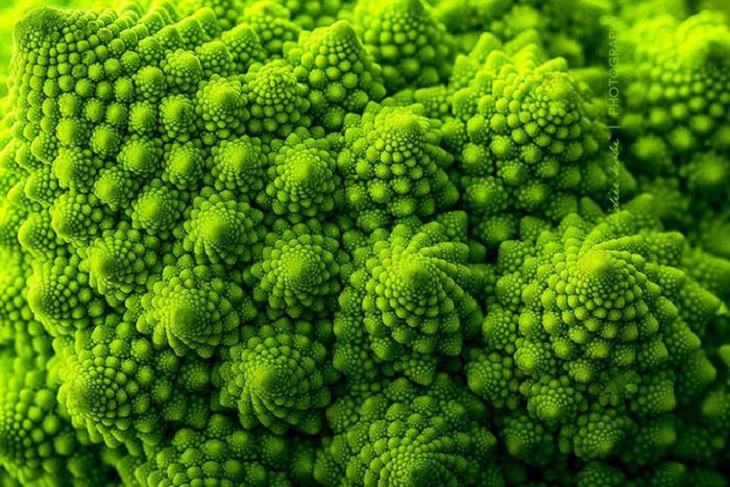
The Amazon Lily Pad and the Jeweled Carpet reveal the sublime beauty of geometric patterns and symmetry, principles that underlie the architecture of the universe. The lily pad's vast, circular shape and radial symmetry speak to the principles of optimization and structural efficiency, themes recurrent in nature's design playbook. The intricate structure of the Amazon Lily Pad reflects a mathematical optimization for surface area. It uses a fractal-like branching pattern to maximize its exposure to sunlight as it floats on the water.
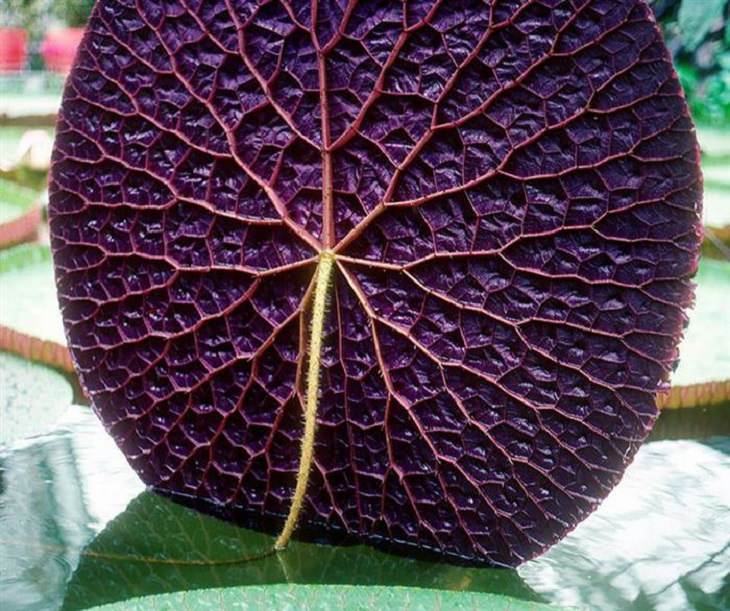

Fractal Cabbage and our next example, the beautiful Sunflower, with their spiraling patterns, not only exhibit an aesthetic appeal but also embody the golden ratio, another mathematical concept that appears throughout the natural and artistic world. This ratio, approximately 1.618, is often associated with aesthetics of balance and harmony. In sunflowers, the arrangement of seeds optimizes the packing efficiency, ensuring the most seeds are packed into the space available.

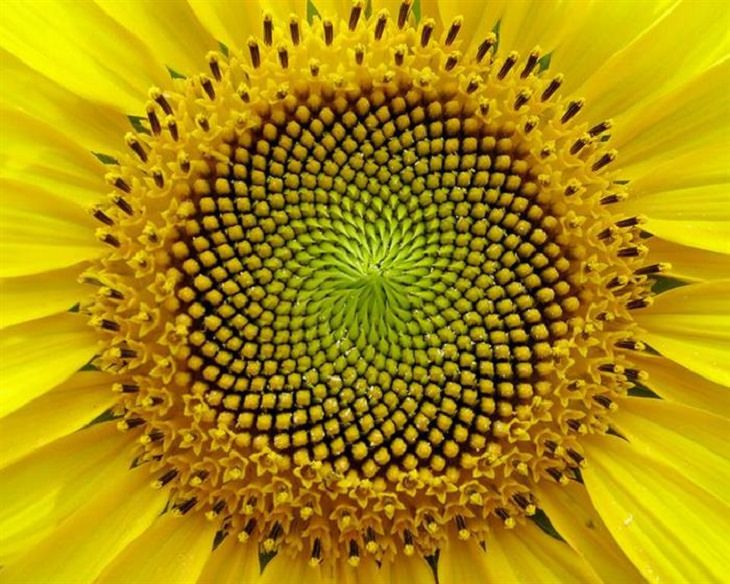
Spiraling Succulents, such as the Aeonium arboreum or 'Spiral Aloe' (Aloe polyphylla), are a living canvas displaying the splendor of mathematical patterns in nature. The leaves of these plants arrange themselves in a perfect spiral, following the Fibonacci sequence, creating a visual spectacle that is both mesmerizing and mystifying. This spiral formation is not merely for aesthetic appeal but serves a practical purpose. It allows for optimal light absorption across all leaves, ensuring each leaf can photosynthesize effectively, even in crowded or competitive environments. Furthermore, the spiral pattern aids in water drainage, funneling rainwater towards the plant's root system in arid climates where every drop of water is precious.
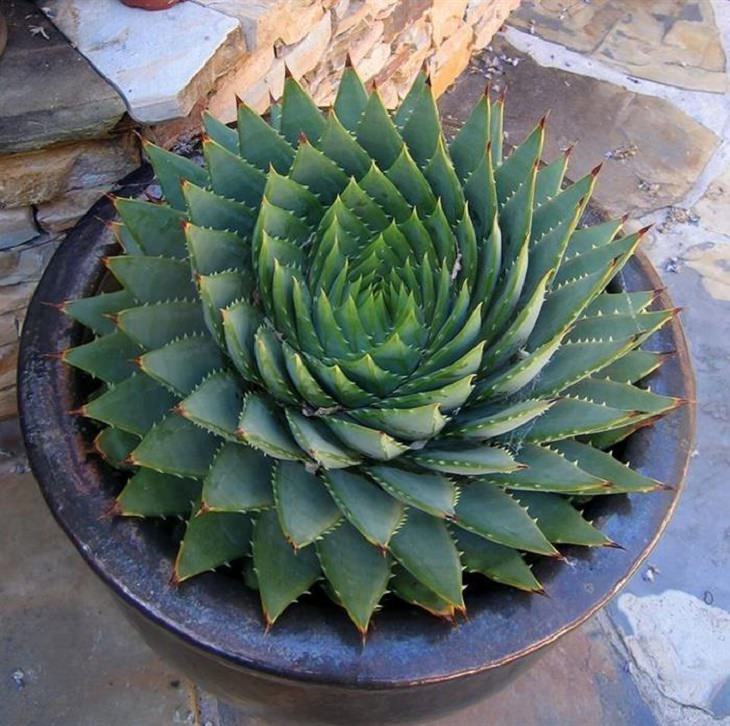
The chameleon's tail is a fascinating example of functional geometry in action within the animal kingdom. This prehensile tail spirals into a perfect coil, a feature that is not just visually intriguing but serves multiple essential functions. From a mathematical perspective, the spiral allows for maximum efficiency in balance and spatial use, enabling the chameleon to anchor itself securely to branches and navigate through complex foliage with ease. The tail's ability to coil tightly or extend fully demonstrates nature's use of mathematical principles to solve physical challenges, optimizing the chameleon's mobility and stability in its environment.
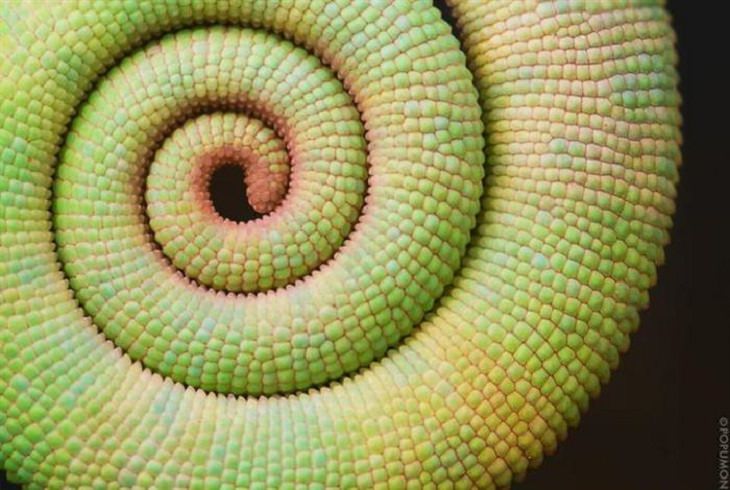

The Passiflora Caerulea, or Blue Passion Flower, stands out as a stunning testament to nature's geometrical precision and complexity. This plant not only captivates with its striking beauty but also serves as a compelling example of radial symmetry and Fibonacci sequencing in the floral world. The flower's structure is a marvel of design, with its concentric circles of petals, filaments, and anthers arranged in a harmonious pattern that seems almost too perfect to be a product of chance. Each element follows a mathematical arrangement, ensuring maximum exposure to pollinators—a critical factor in the plant's reproductive success. The spirals within the flower's structure adhere to the Fibonacci sequence, a pattern that optimizes spacing and efficiency, allowing for an even distribution of its reproductive organs. This arrangement is not merely aesthetic but a brilliant evolutionary adaptation to attract pollinators and maximize pollination efficiency.
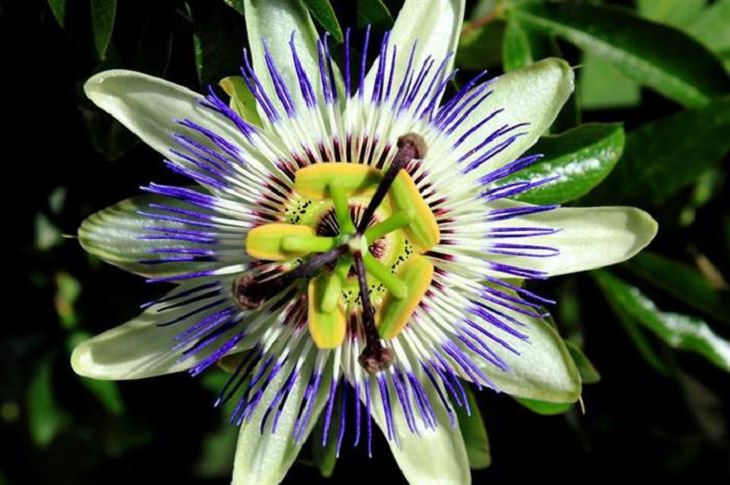
Lastly, but far from least, the African Daisy, or Osteospermum, is yet another splendid exhibit of nature's mathematical artistry. Its radiating petals display a striking symmetry and order that seem to follow the golden ratio, a principle that governs the aesthetics of balance and proportion seen throughout the natural world. Each petal is positioned at an angle that maximizes exposure to sunlight and visibility to pollinators, illustrating the practical application of mathematical concepts for survival. The vibrant color patterns of the African Daisy, ranging from deep purples to radiant yellows, create a contrast that is not only visually appealing but also strategically enhances the flower's ability to attract a variety of pollinators.
